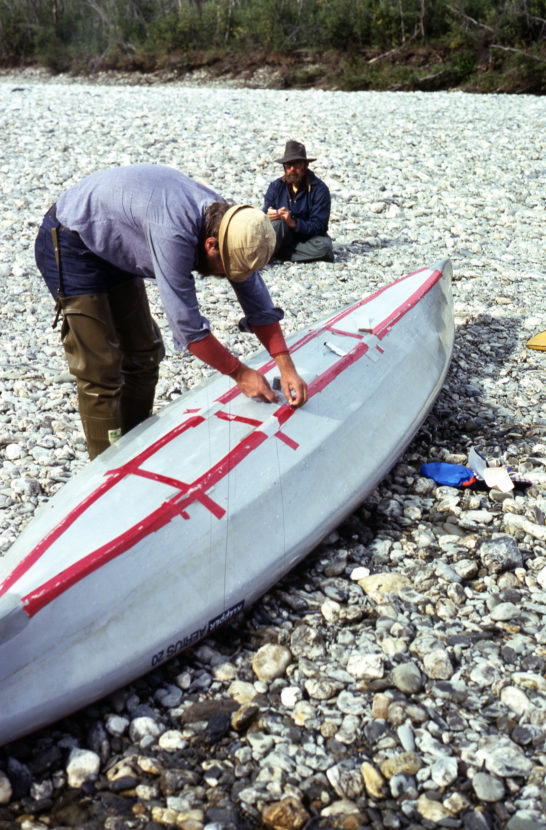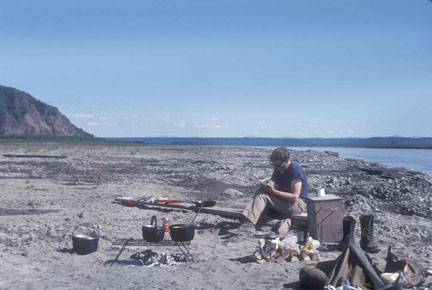
“Coming into the Country,” John McPhee’s book about Alaska, was published in 1977, introducing readers across the country to a wild place, less than 20 years into its statehood. The book quickly became a best-seller and is still popular with tourists and Alaska residents alike.
Between 1975 and ‘77, a writer from Princeton, New Jersey, made four long trips to Alaska for a story that would eventually become “Coming into the Country.” John McPhee had been writing for the New Yorker magazine for about ten years. He was the master of a new literary genre that most modern readers are very familiar with: creative nonfiction.
The book is written in three parts, every word published first in the pages of the New Yorker before coming together for the book’s publication late in 1977. The book describes an Alaska both wild and settled, sometimes contentiously so.
“It is about what McPhee came to believe was the real Alaska and part of the reason for the book’s’ continued popularity is that many Alaskans also feel that that’s the real Alaska,” Eric Heyne said. Heyne an English professor at the University of Alaska Fairbanks who has been teaching “Coming into the Country” since the late 1980s.
The real Alaska described in the book is a place sparsely populated by trappers, prospectors and squatters, living very much off the land and off the grid in the area around the Yukon River.
Heyne specializes in Alaskan literature, and so it makes sense to him that the profile of these characters is inherently relateable to so many Alaskans, then and now.
“A lot of people still have an image in their heads of that Alaska being what they identify with,” Heyne said, “Mining. Trapping. Dog mushing. Canoeing. Homesteading.”

For Alaskans, “Coming into the Country” is familiar, but Alan Weltzein at the University of Western Montana said there’s also an exoticism to the book that appeals to readers outside the state .
“A lot of people still in the 1970s didn’t know anything about Alaska,” Weltzein said. “Part of what McPhee’s trying to capture is its lure and there’s nothing more American than that. The lure is always to go west and find bigger space. I think ‘Coming into the Country’ an invitation for some Americans — maybe just an imaginative invitation more than actual for most — probably to the relief of a lot of Alaskans.”
Eric Heyne agreed that the book is alluring to outsiders as well as requisite reading for anyone already living in the state.
“I absolutely recommend it as the first book to read if you’re coming to Alaska,” Heyne said. “It remains the best blend of comprehensive, accurate, and well written. McPhee’s a fabulous writer. There’s no question about that. But also it’s remained remarkably accurate to today’s Alaska.”
The question of accuracy and relevancy comes up again and again when talking to people about “Coming into the Country”. For one, it was written 40 years ago. Hasn’t Alaska changed since then? Also, the guy who wrote it is from Princeton, New Jersey. How could Alaskans possible identify with that?
“I distinctly remember feeling like I was having a love affair when I was reading ‘Coming into the Country’ in the late 1970s,” Alan Weltzein said. Weltzein hadn’t even made it as far west as Montana when he read the book for the first time. “I had this kind of trust in his representation, so I could ride along with him when he defined what the country means if you live in Alaska.”
It’s an old American tradition: the self-sufficient, independent individual. It’s a myth we’re all familiar with, but for as much as it reads like one, “Coming into the Country” isn’t a novel. The characters are real — many of them still living in Alaska, some of them still in cabins they built with their own hands.
Cable television is littered with reality shows about modern-day Alaskans living in the bush, but Eric Heyne would rather go with McPhee’s portrayal from 40 years ago.
“What you get in the reality shows these days are sort of cartoonish portraits of the kind of people who live off the road system, who have small mines, who run traplines,” Heyne said. “What we get in McPhee’s book are deeper portraits of the actual people.”
At the end of the book, on his last trip to Alaska, John McPhee talks to one of the young prospectors on the Yukon, confirming his understanding of what Alaska represents and what this lifestyle means.
“In the society as a whole,” he writes “there is an elemental need for a frontier outlet, for a pioneer place to go. People are mentioning outer space as, in this respect, all we have left. All we have left is Alaska.”
In some ways, all we have left is this book as a snapshot from 1977 of a vastly unknown but very real place.




